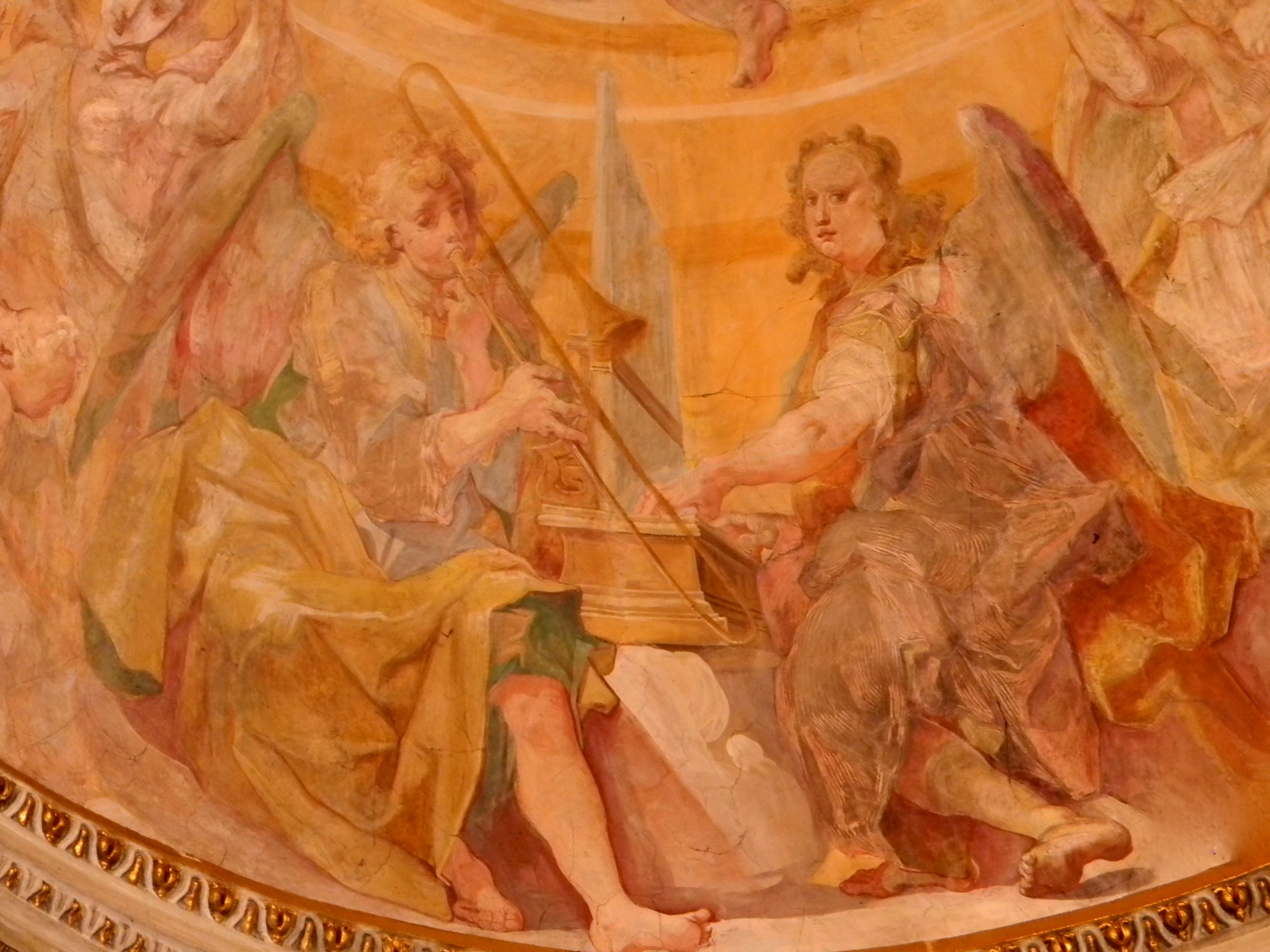
Angel-musicians perform on trombone and organ in a painting by Ferrau Fenzoni (church of Santa Maria in Trastevere, Rome, 1591).
1620—Milan, Italy: An improvisational treatise by Francesco Rognoni (also called Francesco Rognoni Taeggio), Selva di varii passaggi, includes a setting of Orlando di Lasso’s song, Susanne un jour. Marked “Modo di passegiar il violone over trombone alla bastarda,” it features rapid technical passages to be played on either violone or trombone (Baines, Brass 114; Guion, Short History; Herbert, Trombone 87).
1620—Milan, Italy: Francesco Rognoni, Divisions on Palestrina’s Pulchra es (in Woolf, Sackbut Solutions). This piece does not specify trombone; however, see Susanne un jour, by the same composer, above.
1621—At the Bavarian court in Munich, cornettist and trombonist Giulio Martino Cesare writes a collection of 28 instrumental and vocal works called Musicali Melodie. It includes “La Hieronyma.” The subtitle specifies “for trombone or viola” (Whitwell Catalog Baroque 122; Collver 47).
c. 1669—In Bohemia, an anonymous sonata for trombone and continuo is written by a monk in St. Thomas monastery. It is considered the earliest known solo composition specified solely for the trombone.
c. 1755—In Vienna, Georg Wagenseil, composer at the Imperial Court, writes Concerto for alto trombone (Wigness 19). (Royal College of Music sackbut rep list).
1762—In Salzburg, Leopold Mozart writes Concerto for alto trombone or viola (part of a larger Serenata).
c. 1763—In Salzburg, Michael Haydn composes Larghetto for alto trombone as part of his incomplete Sinfonia No. 4. The full title for the trombone movement is “Larghetto a Trombone Concerto” (Guion 140). It is possibly written for Salzburg trombonist Thomas Gschlatt (Donley Thomas 8).
1764—In Salzburg, Michael Haydn writes Concerto for alto trombone (part of larger Divertimento).
1767—In Salzburg, Michael Haydn writes Concertino in D, a double-concerto for alto trombone, horn, and orchestra (Haydn).
1769—In Vienna, Johann Georg Albrechtsberger writes Concerto for alto trombone (Wigness 22). (Royal College of Music sackbut rep list).